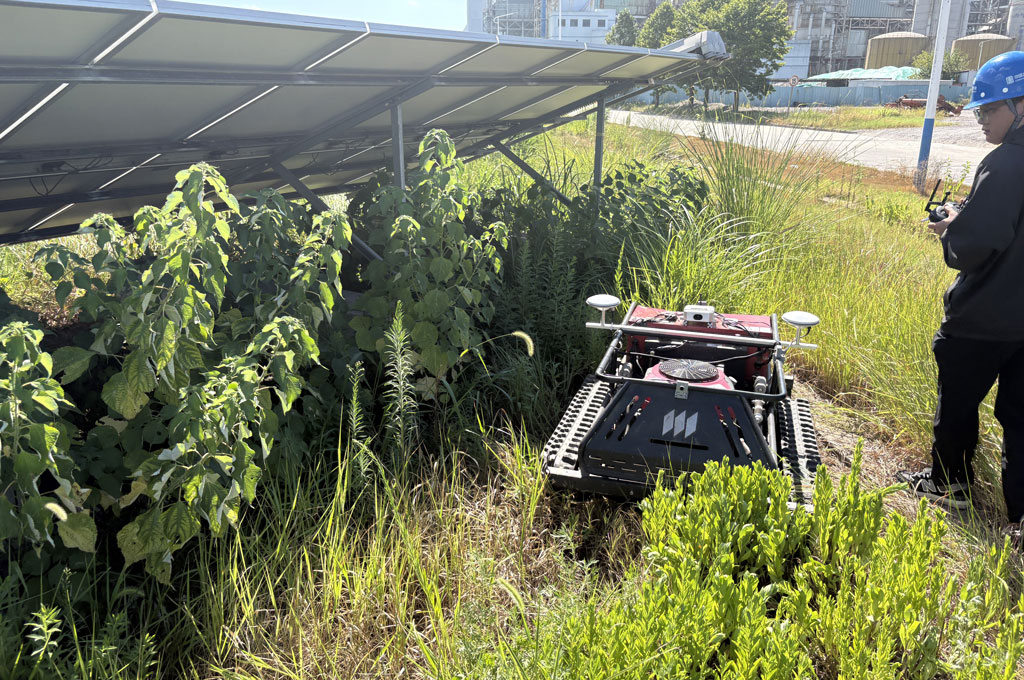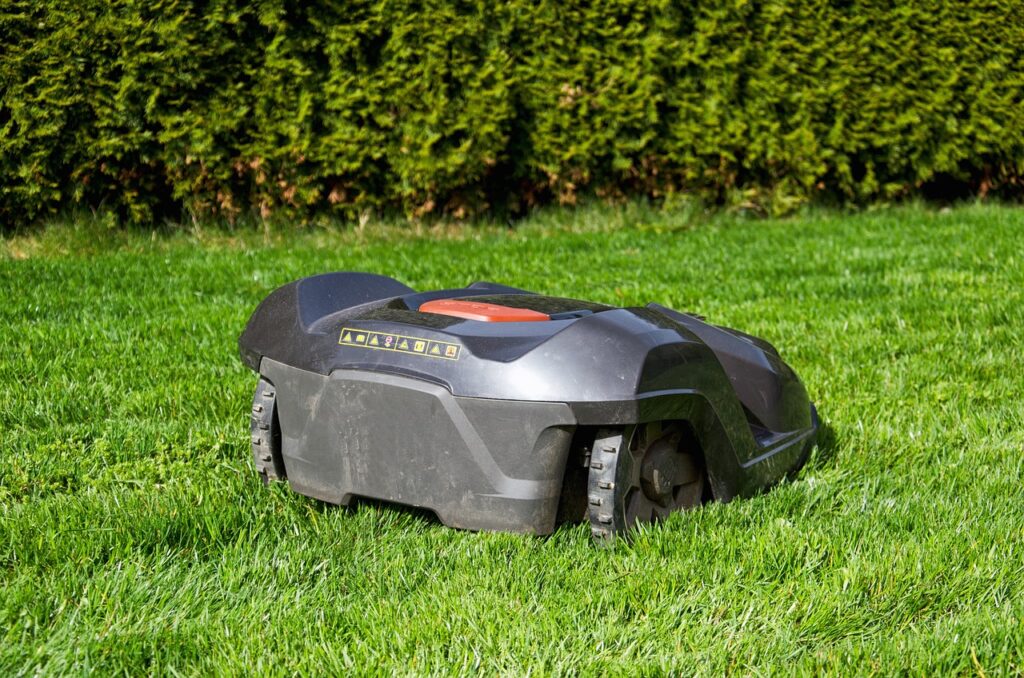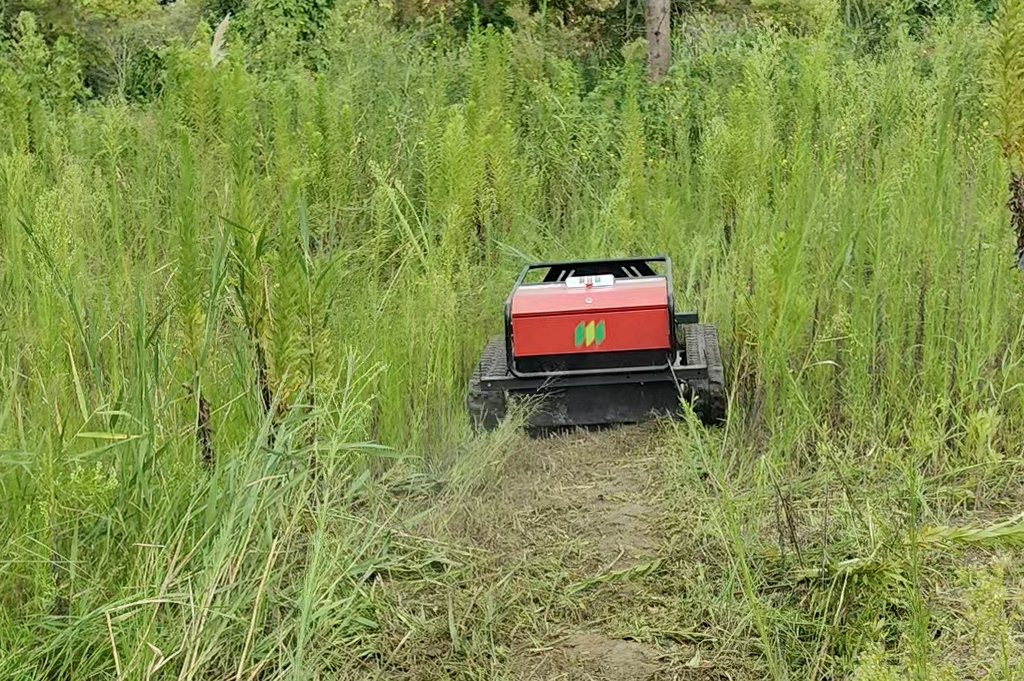1. Introduction
Rising labor costs, growing demands for efficiency, and an urgent shift toward environmentally friendly solutions are reshaping the landscaping and grounds maintenance industry. In this context, the commercial robotic lawn mower has emerged as a smart alternative to traditional mowing.

Unlike small household models, these machines are engineered for large-scale operations—whether it’s sports facilities, municipal parks, solar farms, or golf courses. This article takes a closer look at how they actually work by breaking down their core systems and technologies.
2. Power Systems: More Than Just Batteries
Most people associate robotic mowers with small, battery-powered units designed for residential lawns. Commercial models, however, rely on far more robust solutions:
- High-capacity batteries – Industrial-grade lithium packs deliver longer runtime compared to consumer versions, making them suitable for continuous mowing across large properties.
- Hybrid robotic mowers – By combining fuel engines with electric batteries or even solar assistance, hybrid models extend working hours while cutting fuel use. This makes them ideal for sites like solar farms where downtime directly impacts performance.
- Sustainability benefits – Hybrid and electric systems lower carbon emissions and reduce noise, supporting eco-friendly landscaping initiatives in public and commercial spaces.
3. Navigation & Guidance
Efficiency in mowing isn’t only about power—it’s also about precision.
- GPS + RTK positioning – High-accuracy location data allows robotic mowers to cover vast areas without missing spots.
- Virtual boundaries – Instead of relying on physical fencing or wires, commercial robotic lawn mowers can operate within defined digital zones, making setup more flexible.
- AI-powered sensors – Obstacle detection prevents collisions and ensures smooth navigation around trees, posts, and uneven terrain.
- Path Planning – BotusMov’s commercial robotic mowers can map points via the app and make real-time route adjustments to minimize overlap, thereby improving coverage and fuel efficiency.
4. Cutting & Turf Management
At the heart of any mower is its cutting system. Commercial robotic models are designed with large-scale performance in mind:
- Multiple blade decks – Wider coverage reduces the number of passes required.
- Adjustable cutting height – Operators can fine-tune grass length,adjusting the stubble height from approximately 5 to 90 mm to meetturf management standards for golf courses, sports centers, andmunicipal areas.
- Mulching technology – Instead of leaving behind clippings, mulching returns finely cut grass to the soil, improving lawn health.
- Adaptability – From wet soil and dense weeds to steep slopes, specialized slope mowing equipment ensures reliable performance across challenging terrains.
5. Connectivity & Remote Management
Modern landscaping is no longer just about hardware—it’s also about connectivity.
- Mobile and cloud control – Operators can start, stop, and monitor units from smartphones or centralized dashboards.
- Fleet management – Multiple machines can work simultaneously across different zones, maximizing efficiency in large facilities.
- Data feedback – Performance analytics include coverage area, fuel consumption, fault alerts, and maintenance reminders, helping managers make data-driven decisions.
6. Safety Systems
Safety is a top priority, especially when machines operate in public or high-traffic areas.
- Collision sensors automatically stop the mower when obstacles are detected.
- Tilt and lift sensors shut down blades instantly if the machine tips over or is lifted.
- Safe for public spaces – Parks, schools, and stadiums benefit from machines that are quiet, enclosed, and designed with human safety in mind.
7. Maintenance & Lifecycle
Compared to conventional fuel-driven mowers, robotic models simplify upkeep:
- Reduce maintenance – No oil changes, fewer moving parts, and optimized engine loads lower servicing needs.
- Battery lifecycle – Most commercial robotic lawn mowers feature modular batteries, which can be replaced after several years without replacing the entire unit.
- Software upgrades – Firmware updates continuously improve navigation, safety, and efficiency, extending the functional lifespan.
8. Key Benefits Recap
Summarizing the value of commercial robotic lawn mowers:
- Cost savings – Reduced manpower and lower operating costs.
- Efficiency – Continuous, 24/7 operation with minimal downtime.
- Eco-friendly – Quiet performance with reduced emissions.
- Scalability – Single-unit solutions or full robotic lawn mower fleet management for large contractors.
9. FAQ: Commercial Robotic Lawn Mowers
Q1: What is a commercial robotic lawn mower?
A commercial robotic lawn mower is an automated machine designed for large-scale vegetation management in areas like sports fields, solar farms, airports, and municipal parks. Unlike household units, they feature higher capacity, hybrid power options, and advanced navigation for continuous operation.
Q2: How does a hybrid commercial robotic mower save costs?
Hybrid models combine fuel with battery power to extend runtime and reduce fuel consumption. This balance lowers operating expenses while ensuring uninterrupted mowing, especially on large properties.
Q3: Can robotic mowers handle slopes and uneven terrain?
Yes. Specialized robotic slope mowers are equipped with tracks and high-torque motors, making them capable of safely handling steep inclines, rugged ground, and wet soil conditions where traditional ride-on mowers struggle.
Q4: Do commercial robotic lawn mowers require constant supervision?
Minimal supervision is needed. With GPS guidance, obstacle detection sensors, and remote-control options, operators can monitor and manage fleets from a central dashboard or mobile app.
Q5: How do robotic lawn mowers improve sustainability?
By reducing fuel usage, lowering emissions, and operating quietly, robotic mowers align with corporate sustainability goals. Mulching technology also recycles grass clippings, enriching the soil and improving turf health.
Q6: What industries benefit the most from commercial robotic mowing?
Industries with extensive land management needs benefit the most—solar farms (to prevent shading losses), airports and highways (for long corridors of grass), sports complexes and golf courses (for consistent turf quality), and municipalities managing public green spaces.
10. Conclusion
The commercial robotic lawn mower is more than just an upgrade in landscaping equipment—it’s a shift toward automation, sustainability, and smarter grounds management.
By combining advanced power systems, precise GPS navigation, intelligent cutting mechanisms, and connected fleet control, these machines deliver measurable advantages over traditional mowing methods. As technology continues to advance, expect even greater integration of renewable energy, AI-driven decision-making, and wider adoption across industries ranging from solar energy to sports management.
In short, commercial robotic mowers are redefining what it means to manage green spaces—making operations safer, greener, and more cost-effective for the future.


